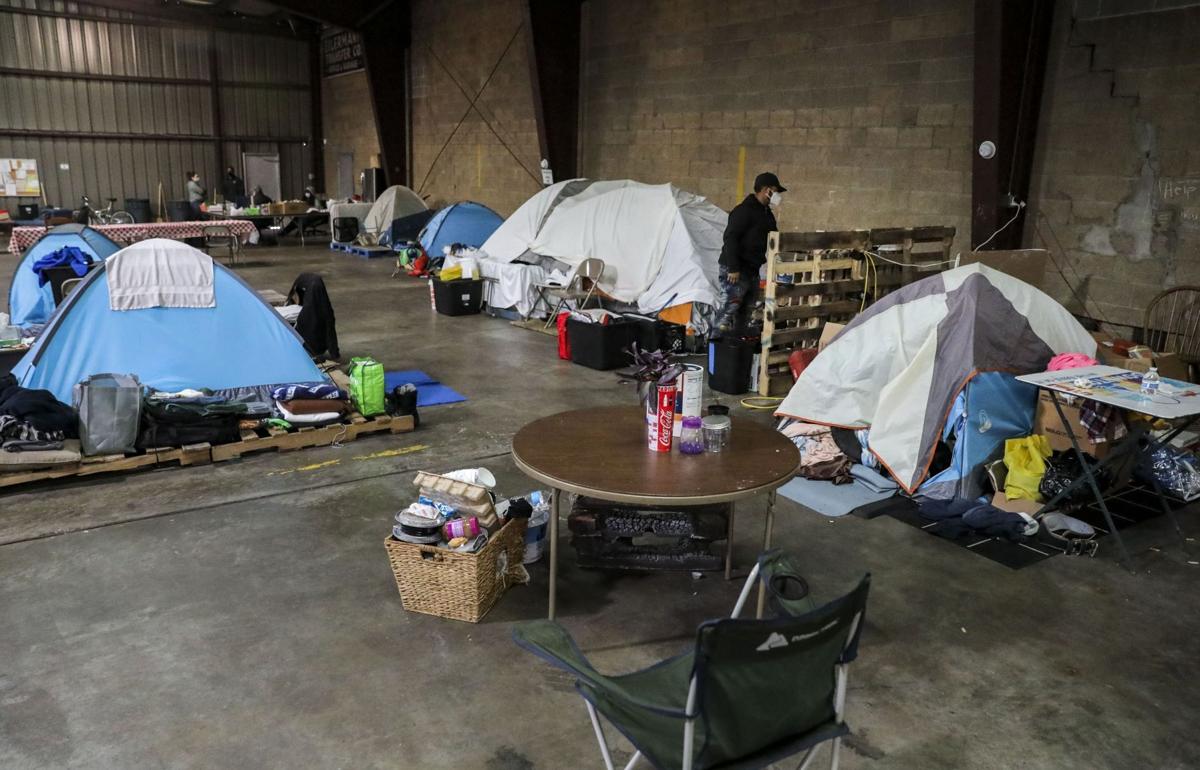ST. LOUIS┬áÔÇö On her first visit to the Gateway City in 1998, Mandy Chapman Semple was trying to harness the power of renewable energy.
How to do so was the question of the year in high school policy debate. Semple, a state champion from Kansas, came to town for the national debate tournament, which was hosted by Pattonville High School.
These days, Semple offers solutions to the vexing problem of homelessness. ThatÔÇÖs what brought her to the on Tuesday night, where she discussed her experiences in Houston and Dallas. She shared lessons with 51║┌┴¤ leaders on how those two Texas cities made progress in housing people who previously were living on the streets.
There is a similarity in what Semple does these days to the process of winning a debate. Having a plan isnÔÇÖt enough; you have to show the judges, or the community, how that plan will succeed.
People are also reading…
ÔÇ£Re-housing really does work,ÔÇØ Semple told me in an interview before her speech, which was hosted by the . ÔÇ£But if I canÔÇÖt show you that it works, then it doesnÔÇÖt matter.ÔÇØ
Houston is a good example. Over the past decade, under two mayors, the city has relied on a philosophy that pairs services with housing. The city has placed in permanent housing  who were homeless, in shelters or at risk of homelessness.
In 51║┌┴¤, Semple found open but sometimes skeptical ears. Like in other major cities, there are several nonprofits here dedicated to serving the people who live without shelter. They work under the umbrella called a Continuum of Care, which coordinates, or fights, with government agencies that are sometimes funders and partners. The agencies can also occasionally be obstacles to accomplishing the work of getting people housing and the services to battle poverty, addiction and mental health issues.
Those conflicts are common in cities trying to battle homelessness. Government agencies embrace different solutions. Nonprofits fight for the same pot of money. Some feed and clothe homeless people; others build tiny houses; some provide tools to battle addiction.
In 51║┌┴¤, the divisions between the city and the county┬áÔÇö and among the county's 88 municipalities┬áÔÇö makes the work harder. So does the lack of help from the Missouri Legislature, which provides no funding and just passed a bill making it a crime for homeless people to sleep on state-owned property. The nonprofits who do the work on the streets are challenging the new law in court.
For a city to properly win the battle against homelessness, ÔÇ£Everyone needs to be on the same page,ÔÇØ Semple said.
In 51║┌┴¤, dealing with homelessness is often a parochial affair that involves moving one encampment from a park here or a riverfront there to somewhere else. Resources are shifted from one shelter to another, waiting for complaints to pile up, before the cycle starts all over again.
The line of ramshackle tents adjacent to St. PatrickÔÇÖs Center on Tucker Boulevard in the past couple of weeks helps tell that story. Last year, during the pandemic, a virtual tent city of homeless people appeared on the Interco Plaza next to the St. PatrickÔÇÖs Center, one of the cityÔÇÖs largest providers of homeless services. At first, Mayor Tishaura O. Jones was hesitant to move the encampment. Complaints rose, and housing was found for some. Others were moved to an encampment nearby, and a fence was erected around the park.
Now there are new tents and new sleeping gear, propped against the fence. Moving homeless people to and fro doesnÔÇÖt solve the problem. Getting them housing, and services connected to that housing, does, Semple says.
Anthony DÔÇÖAgostino, executive director of the St. PatrickÔÇÖs Center, was among the many nonprofit leaders listening to SempleÔÇÖs speech. He liked what he heard, particularly the part about Dallas and its business leaders coming up with to implement a long-term vision for the homeless problem. That city plans to find housing for 2,700 people in the next three years. ItÔÇÖs about halfway to its goal, making a dent in the homeless population, but there is a long way to go.
DÔÇÖAgostino thinks the various partners who battle homelessness in 51║┌┴¤ cooperate as well as they have during the years he has been involved in the issue.
ÔÇ£Everything that they did (in Dallas) is what we have been trying to do for years,ÔÇØ he said. That includes setting up a new umbrella nonprofit┬áÔÇö House Everyone STL┬áÔÇö to serve as a unifying force.
The question is who will bring together all parties ÔÇö the city, the county, the nonprofits ÔÇö┬áand tens of millions of dollars to get people living on the streets into the permanent housing they need?
ÔÇ£In every community, you have to find out what is the center of gravity that can bring the entire community together,ÔÇØ Semple said.
In Houston, it was the mayor. In Dallas, it was a nonprofit foundation. With the sort of progress both cities have made, they have become the envy of other cities. The formula works, Semple said.
She likens it to developing an incident command structure to manage a crisis. And somebody needs to be in charge.
ÔÇ£Is there an anchor we can dock to?ÔÇØ Semple asked the roomful of people dedicated to solving the problem. ÔÇ£Ending homelessness takes leaders.ÔÇØ


















